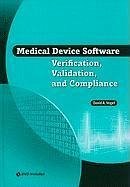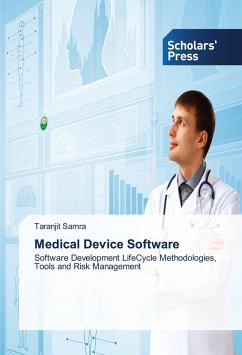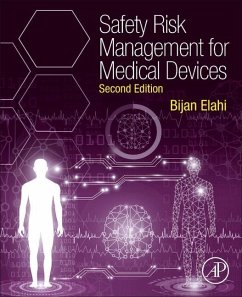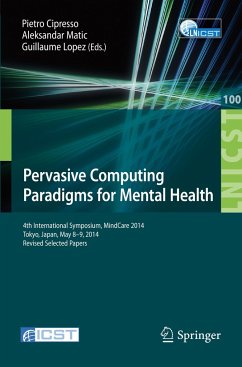Writing In-House Medical Device Software in Compliance with EU, UK, and US Regulations
Versandkostenfrei!
Versandfertig in 1-2 Wochen
Weitere Ausgaben:

PAYBACK Punkte
66 °P sammeln!




This book is a comprehensive guide to producing medical software for routine clinical use.
Philip S. Cosgriff worked as a clinical scientist (medical physicist) in the UK National Health Service for nearly 40 years, specialising mainly in nuclear medicine. He produced in-house data analysis software for that whole period, with an emphasis on software quality assurance. He was a UK delegate on a pioneering EU project (COST-B2) on quality assurance of nuclear medicine software, and he has contributed to numerous reports published by the UK Institute of Physics and Engineering in Medicine (IPEM). He retired from the NHS in 2016 but has remained professionally active, with continued contributions to IPEM publications and a chapter in a recently published book entitled Diagnostic Radiology Physics with MATLAB®. He is a recognised expert on the application of EU and US medical device legislation, as well as other consumer protection legislation that may affect the in-house medical software developer. His current interests include the application of AI methodologies to diagnostic imaging and the future role of medical apps. Matthew J. Memmott is a consultant medical physicist based at Manchester University NHS Foundation Trust, with experience working as a clinical scientist in the UK National Health Service for over 15 years. He has previously published journal articles, book chapters and delivered talks at national and international conferences on topics ranging from Monte Carlo image generation, computational phantoms and cardiac positron emission tomography (PET¿CT) optimisation to dosimetry for radiation accident scenarios. He has a long¿standing interest in scientific programming, utilising various languages for analysis and simulation of ground truth quality assurance data; and commercial platforms for the development of in¿house clinical applications. He was a previous Chair of the UK Institute of Physics and Engineering in Medicine (IPEM) Nuclear Medicine Software Quality Group (NMSQG); a group which develops national audits to promote quality standards across departments utilising in¿house developed software, as well as commercial packages. His current interests are in modelling exposure scenarios from radiation accidents, developing ground¿truth computational phantoms for software quality assurance, investigating novel quantitative methods in PET¿CT studies and the potential applications of AI in nuclear medicine.
Produktdetails
- Verlag: CRC Press
- Seitenzahl: 292
- Erscheinungstermin: 26. März 2024
- Englisch
- Abmessung: 240mm x 161mm x 20mm
- Gewicht: 605g
- ISBN-13: 9781032293486
- ISBN-10: 1032293489
- Artikelnr.: 69482373
Herstellerkennzeichnung
Libri GmbH
Europaallee 1
36244 Bad Hersfeld
gpsr@libri.de
Für dieses Produkt wurde noch keine Bewertung abgegeben. Wir würden uns sehr freuen, wenn du die erste Bewertung schreibst!
Eine Bewertung schreiben
Eine Bewertung schreiben
Andere Kunden interessierten sich für














